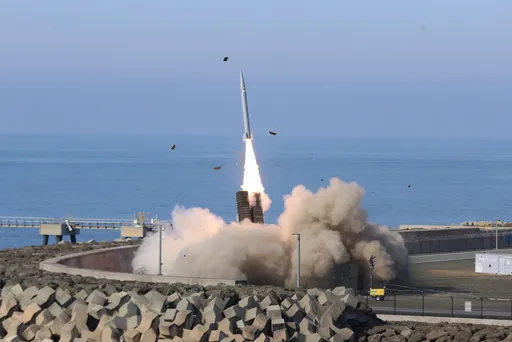As protests over the extrajudicial killing of George Floyd engulfed the US for a sixth straight night, there is a sense of frustration that the country has been through this all before.
Floyd’s death was just the latest in a series of high-profile cases of black people being killed at the hands of police in recent years.
Since 2015, over 1,200 black people have been shot and killed by police, and that doesn’t include those who died in police custody or were killed using other methods.
At 13 percent of the US population, black people are shot at a disproportionate rate – three times more than their white counterparts.
Years of police brutality and misconduct had previously sparked countless marches and debates on reform.
In August 2014, Michael Brown, a black 18-year-old high school student, was shot and killed by a police officer in Ferguson, Missouri. His death, along with a string of others, set off a wave of non-violent demonstrations across the country.
Black Lives Matter (BLM) emerged as the most visible and organised movement from this fractured moment, pushing the problem of police violence against minorities to the forefront of American political and social discourse.
Eric Garner’s final words, as New York City police officers pinned him to the ground and choked him to death – “I can’t breathe” – found a tragic echo on May 25, when Floyd uttered the same words before he was killed.
The deaths of Floyd in Minneapolis last week and of Breonna Taylor in Louisville in March are a painful reminder that police reforms have failed across the country.
Why has there been so little progress when it comes to reforming America’s policing system?
What works and what doesn’t
The Ferguson protests had ushered in an era of police reform that saw both federal and local governments invest heavily in police training, including mounted technologies like body cameras to bring about accountability, and on racial bias.
Research points out that body cameras have had hardly any effect on officer behaviour.
And there is the question of accountability: 99 percent of police killings between 2013–2019 have not resulted in officers being charged with a crime or convicted.
Strategies for reducing racial basis have also been found wanting.
Given the issue of racial diversity within US police departments, advocating for the hiring of a diverse police force to reduce police violence against people of colour seemed a reasonable solution.
Jennifer Cobbina, a professor of criminal justice at Michigan State University, argues that increased representation does not solve the problem, using the example of Baltimore.
“Just over half of the city’s police are officers of color,” she wrote. “Yet, the Baltimore Police Department was found by the Department of Justice in 2016 to have engaged in a pattern of unconstitutional racially biased policing.”
Other studies have found that hiring more minority officers is not correlated with a decline in the killing of citizens.
Policing culture is often cited as a hurdle. The pressure to conform to prevailing institutional norms plays a huge role in shaping the behaviour of officers and determines how they treat civilians of different races.
Meanwhile, there have been certain policies, when implemented, that have shown promising signs.
Tighter restrictions on when and how police officers can use force – such as putting someone in a chokehold, shooting a moving vehicle or warning before shooting – appear to substantially reduce killings.
For each of these policies that were examined by Campaign Zero, it showed those police departments that had adopted more restrictive use of force policies were less likely to kill people than those departments that had not.
Since implementing such reforms in 2016, the San Francisco Police Department saw a 30 percent decline in the use of force by 2019.
Training officers to be better equipped to handle mental health illness is another front for reform.
The San Antonio police department established its own mental health unit, and every officer must complete 40 hours of training in crisis intervention.
However, neither of these reforms are as widespread as they need to be.
Beyond reform?
There are many who believe that American system of policing is indelibly marred by its history, and will require nothing short of a purge of centuries of racism that is embedded at its very heart.
In the South, policing evolved from white vigilante slave patrols that enforced slavery laws; in the North, it developed as a way to control an underclass of blacks, Native Americans and immigrants.
This means coming to terms with the racist history of police abuse. One way has been by initiating a truth and reconciliation process to both address grievances and rebuild trust with communities scarred by a racist criminal justice system.
Over a number of years, there has been a steady expansion of policing into every facet of social life for America’s poor – a trend that overlaps with the failure of local politicians to develop non-policing solutions to social problems that disenfranchised communities face.
One systemic issue is the militarisation of local police forces. The Federal 1033 program, the Department of Justice’s COPS Office, and homeland security grants have funneled billions of dollars in military hardware into US police departments to advance a “war on crime” approach.
A report by the ACLU examined the consequences of this, stating that primarily low-income neighbourhoods are turned into warzones. Officers are encouraged to adopt a “warrior mentality” and see people they are supposed to serve as enemy combatants.
The Obama administration attempted to tackle this issue by restricting the transfer of surplus military equipment to police departments. But it was then swiftly reversed by President Trump.
For some, the solution increasingly isn’t more piecemeal reforms, but to slash budgets or abolish policing as it currently exists.
The protests in Minneapolis reflected this sentiment, tapping into a growing exasperation around reform and accountability, and pivoting toward a strategy of defunding police departments.
Activist groups like Black Visions Collective and MPD 150 are demanding just that.
In a statement on May 29, the Minneapolis group Reclaim the Block called on the city council to defund the police department by $45 million and shift resources into “community-led health and safety strategies.”
It goes on to say: “Now is the time to invest in a safe, liberated future for our city. We can’t afford to keep funding MPD’s attacks on Black lives.”
The tensions between those who want to see reformed policing and those who want to see it abolished are likely to become more pronounced as the protests rage on.
What seems clear is that for any systemic change to take place, it would mean having to address the inequitable conditions in which marginalised communities live and how it defines their relationship to policing.
























